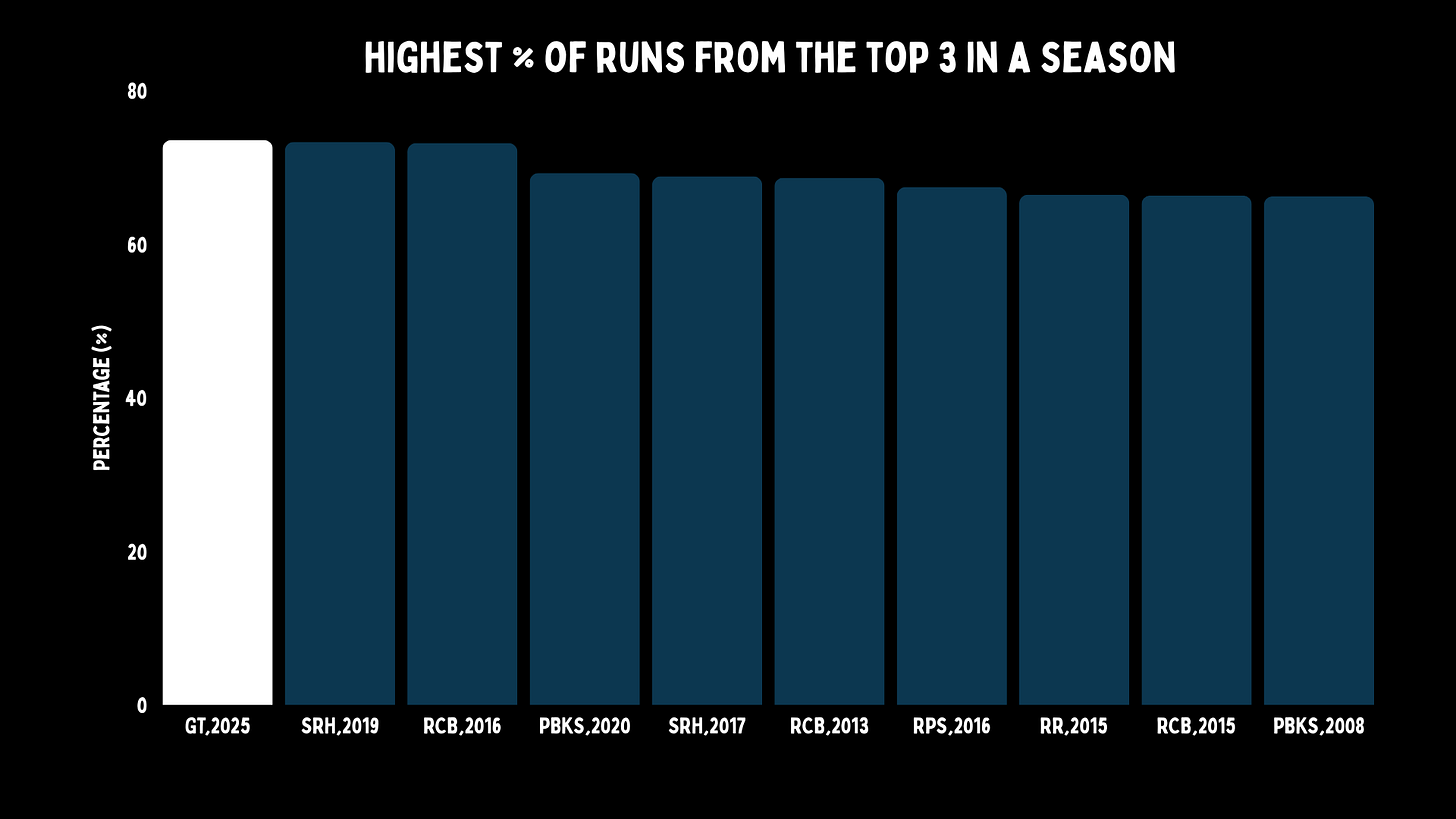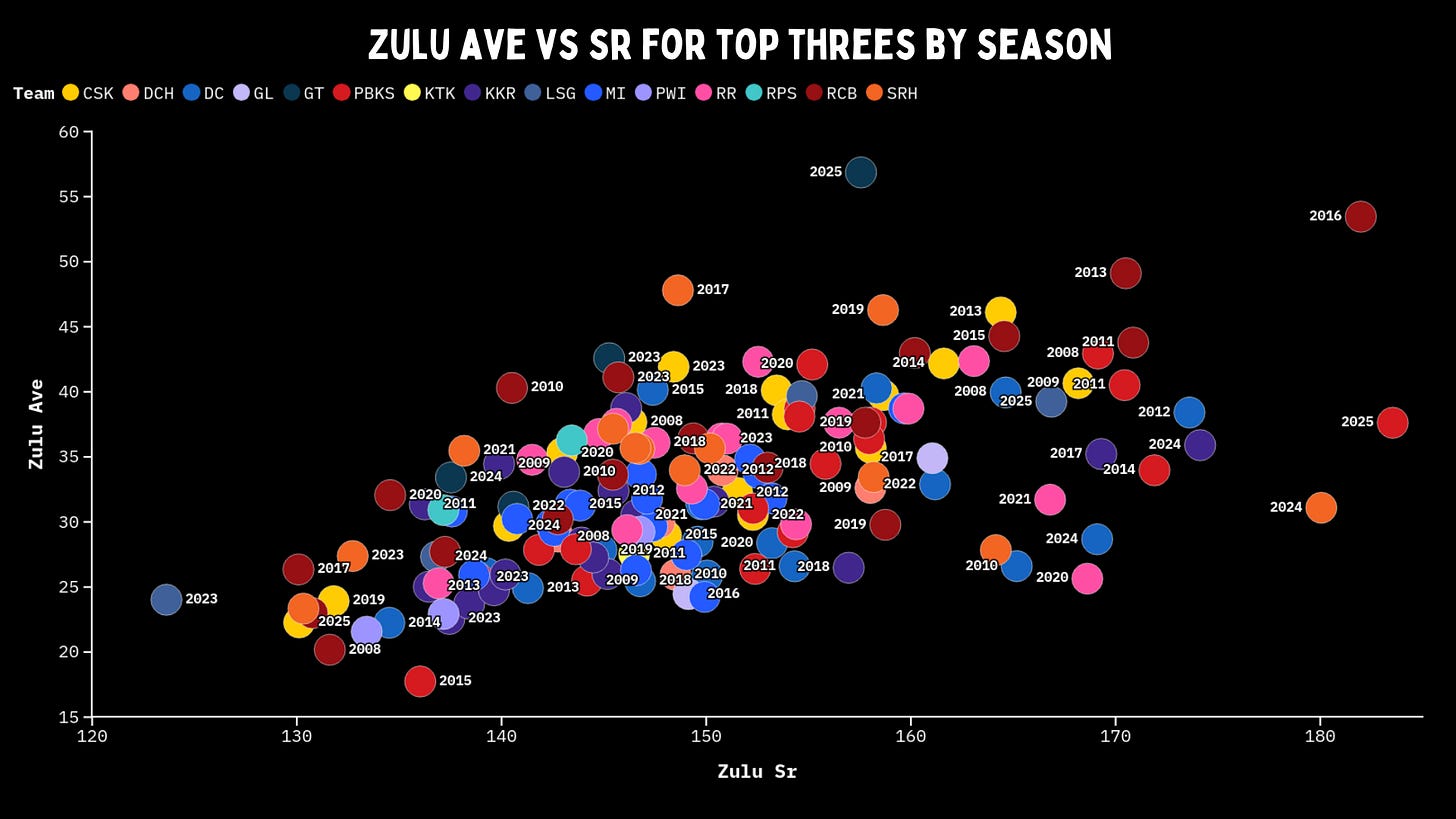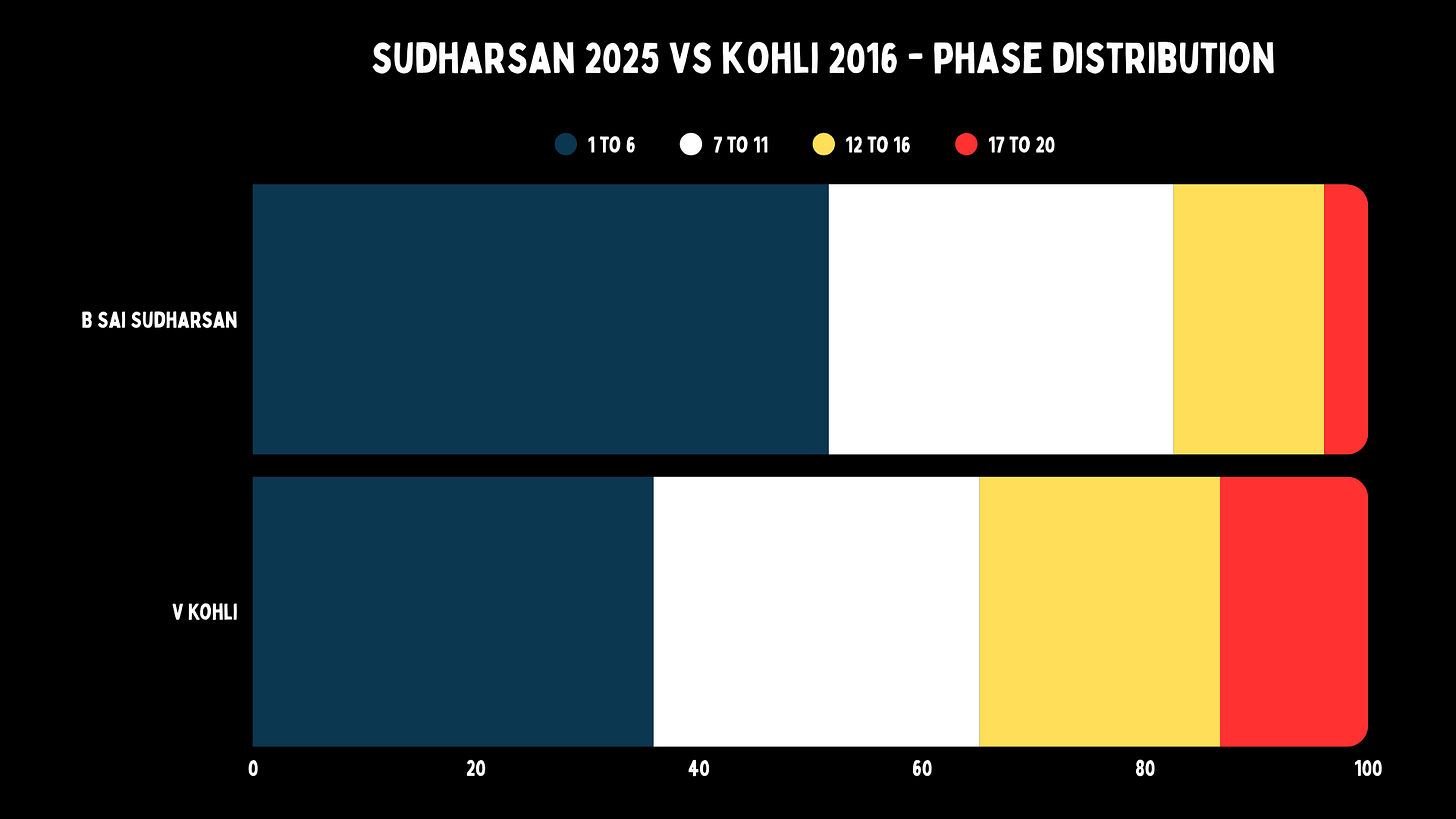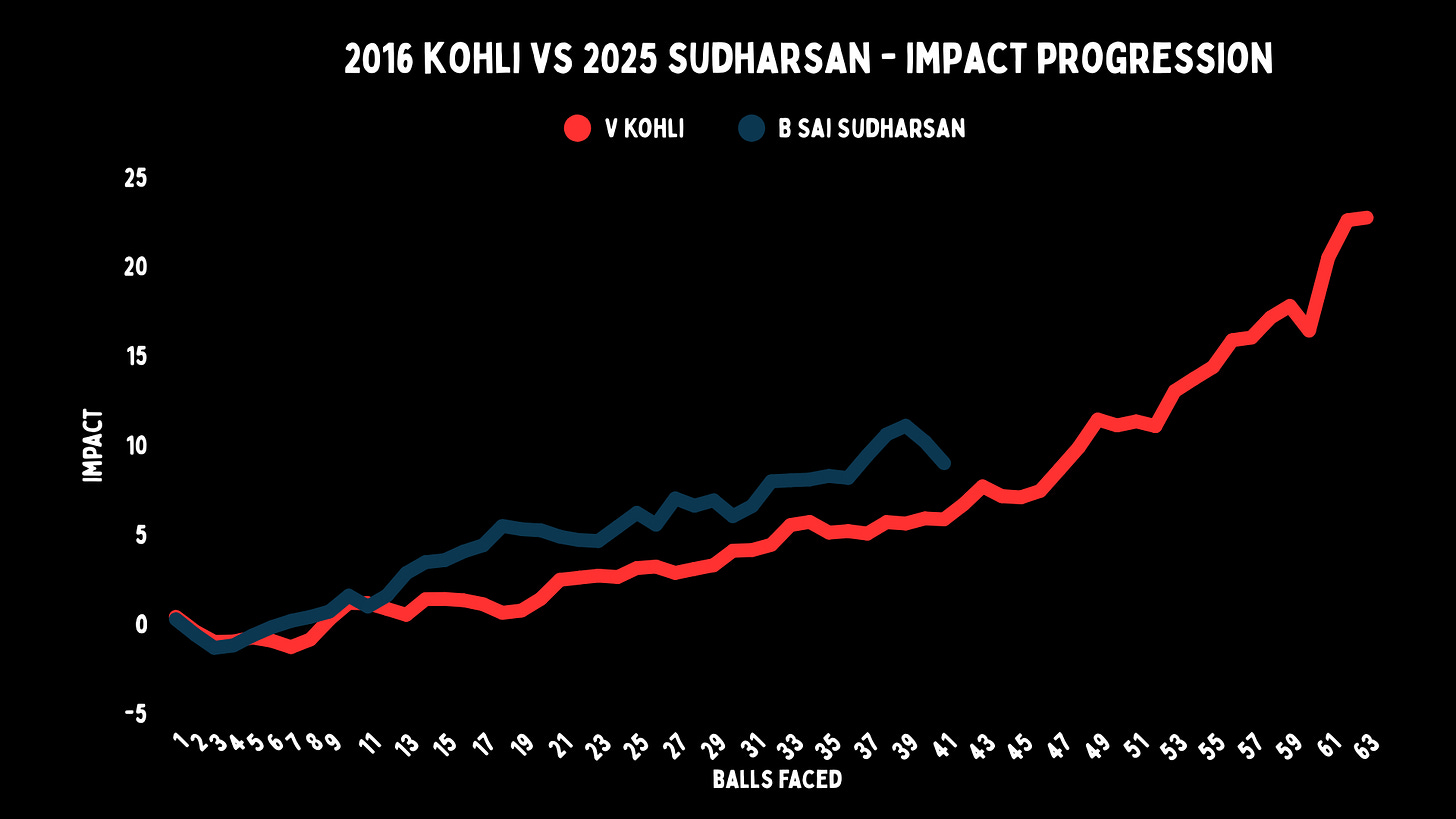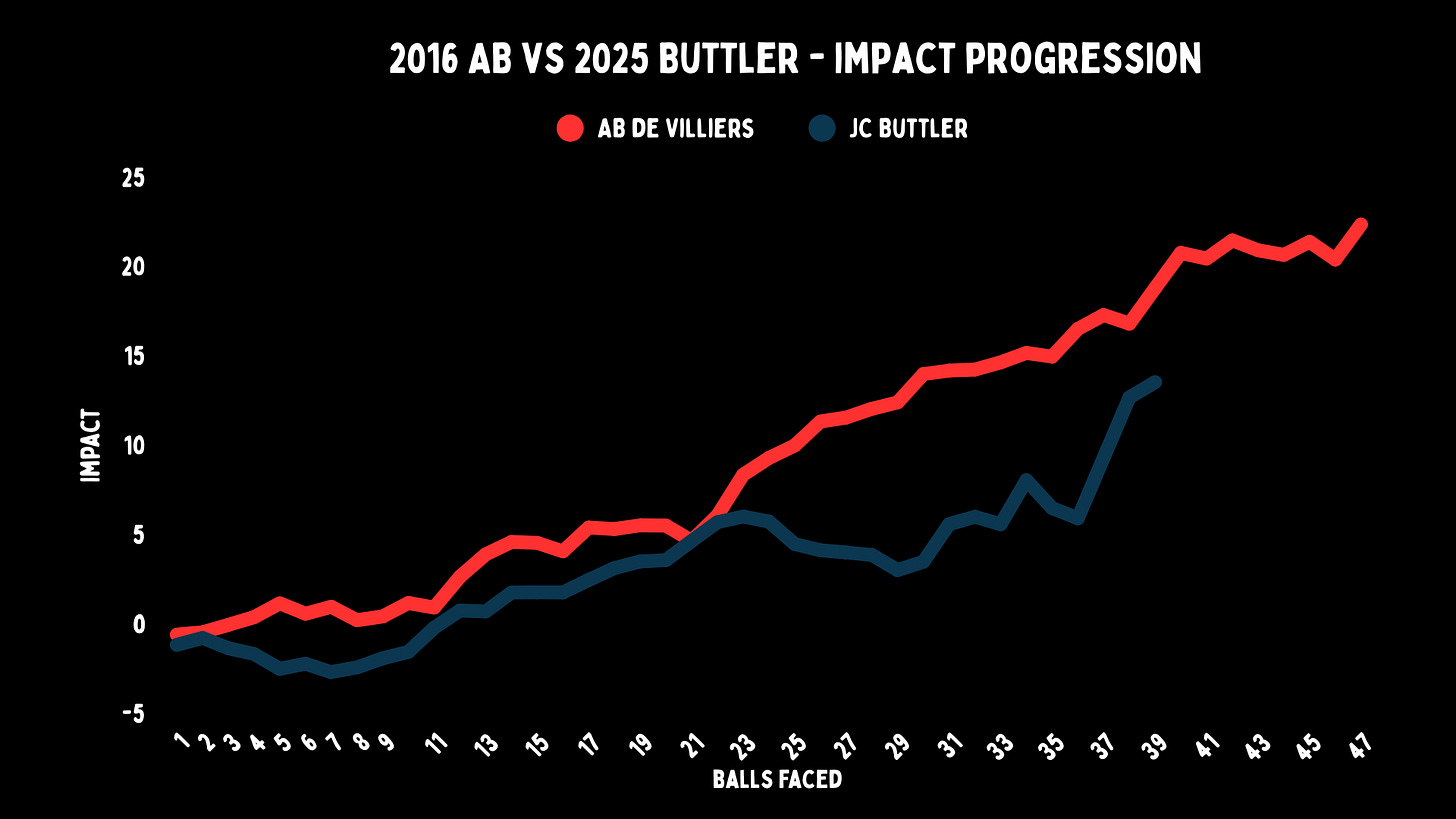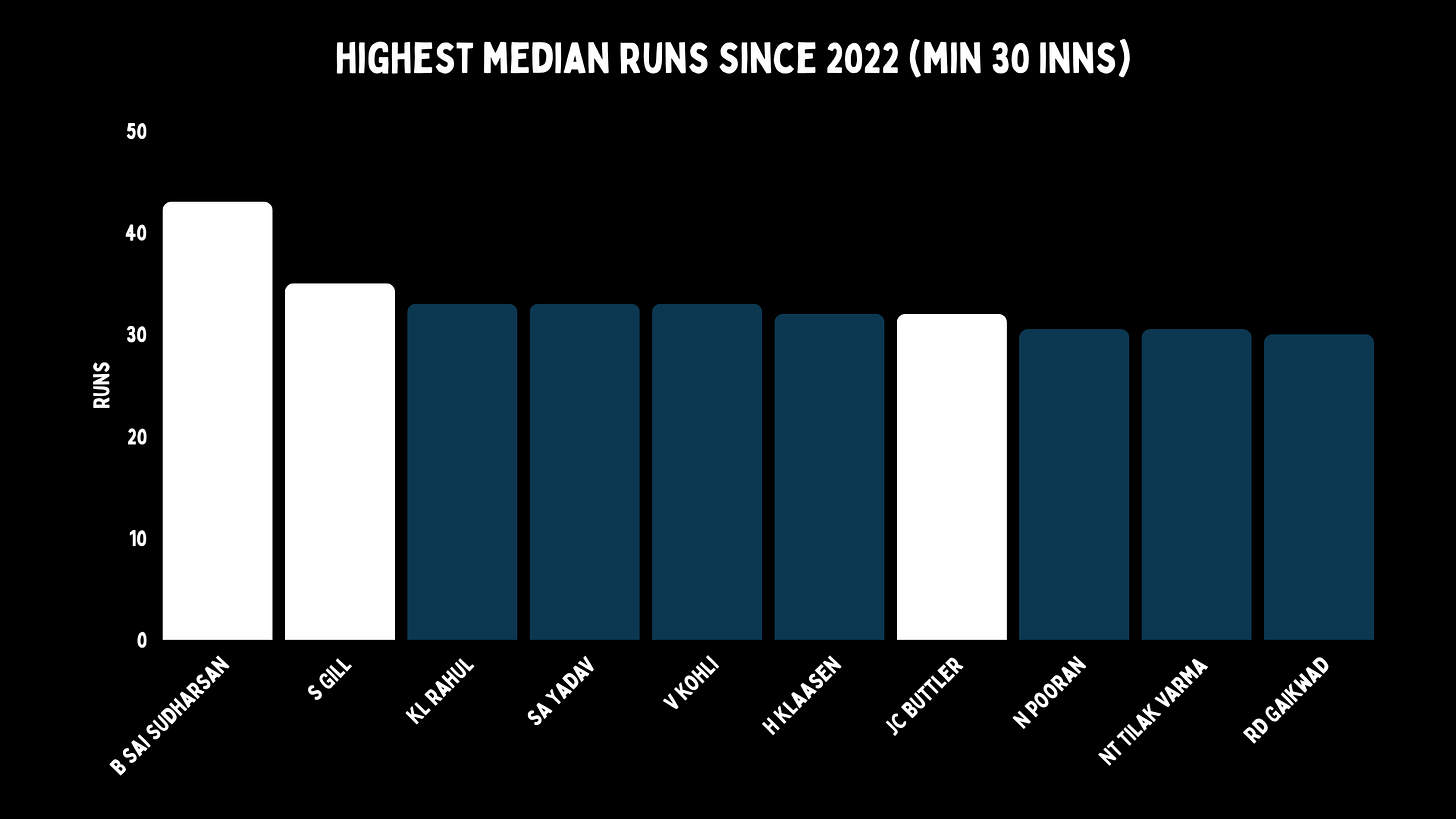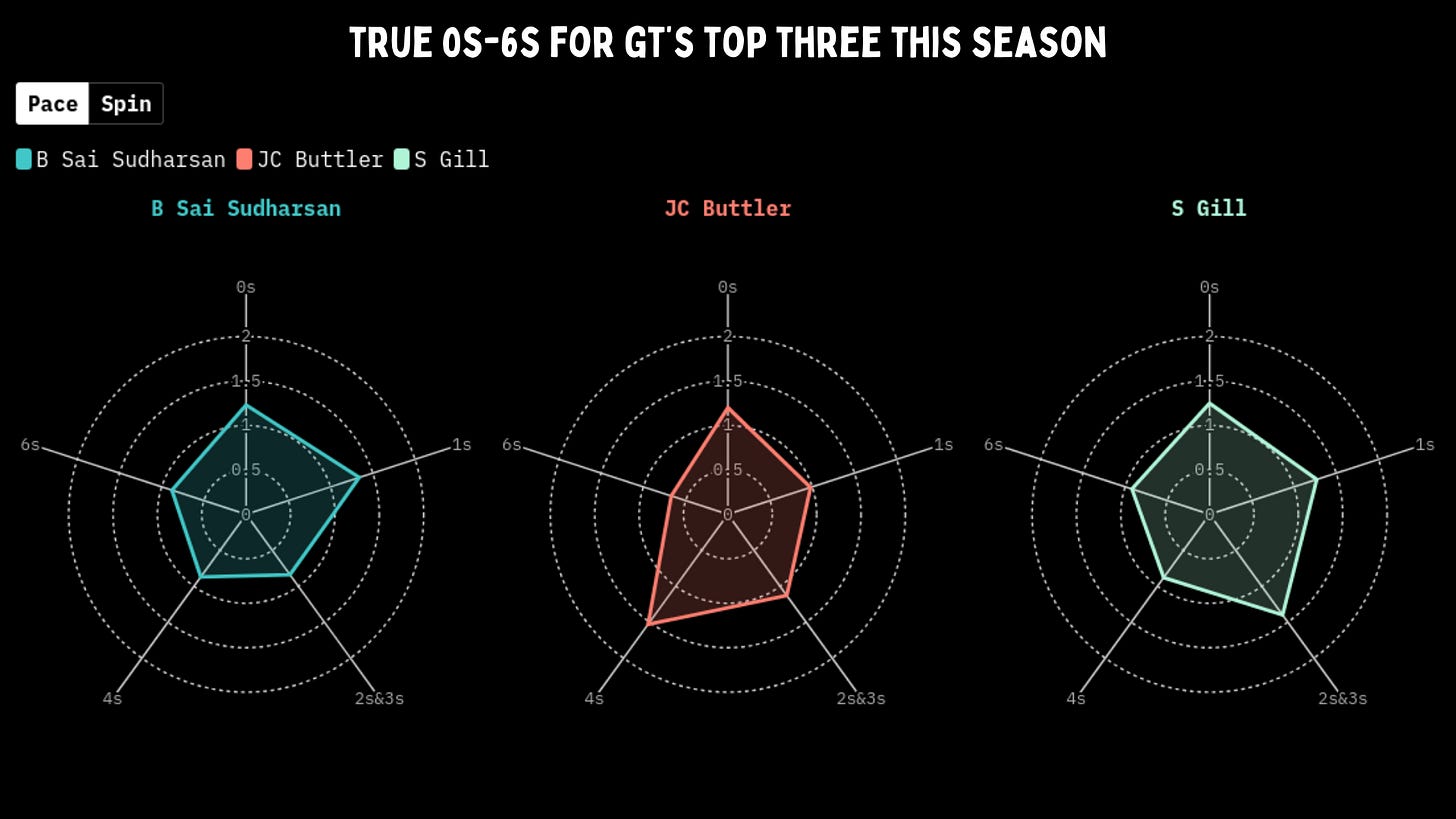What makes the Gujarat Titans' top three so good?
Is this version of Gujarat’s top three the best that we’ve seen in IPL history?
We are offering a 30% off deal for The Art of Batting. Just click this link and use the code GOODAREAS30 at checkout. This works for orders and pre-orders. It’s a global discount, so it will work across Australia, Canada, India, UK and US sites.
What if I told you that Gujarat were the best team in terms of scoring quickly, and also not being dismissed? It sounds like a logic puzzle you see someone show on Instagram. Like, how can a team not be dismissed, and also smash the fresh hell out of the ball?
Gujarat Titans lose 4.6 wickets per match on an average in IPL 2025. The next-best team is Royal Challengers Bengaluru, with 5.62 dismissals per game. Usually you would think that means GT bat within themselves, that they are a team of slow-moving anchors. But they’re also scoring quicker than any other team. They are the only batting side with a run-rate greater than 10 runs per over.
This is all built on the most automatic top three in the business. Sai Sudharsan is currently number one (as of the RR v GT game on Monday) in terms of most runs scored in IPL 2025, while Jos Buttler and Shubman Gill are fifth and seventh, respectively. In just nine games, the first two names have crossed the 400-run mark, while Gill is at 389. And that’s with Gill not looking like he’s at his best.
Naturally, their top three have the highest run contribution this season.
But they stand out even when we look at all IPL seasons. The two teams just behind them are SRH in 2019 and RCB in 2016.
The former were reliant on David Warner and Jonny Bairstow, and Manish Pandey did well in the limited opportunities he got. Similarly, RCB had Virat Kohli and AB de Villiers doing the bulk of the work (and have two of the top 10 IPL seasons of all time), with KL Rahul chipping in when he got a chance. Chris Gayle was inconsistent that year, averaging under 23.
So is this version of Gujarat’s top three the best that we’ve seen in IPL history?
According to Zulu numbers, the only other season that a top 3 averaged over 50 were the RCB top 3 from 2016. However, once adjusted for eras, that top 3 has a Zulu SR of 182 compared to 157 for Gujarat. That really shouldn’t come as a surprise. As we mentioned earlier, two players had all-time great IPL seasons in the same year.
While watching Sudharsan this season, we felt that he was batting like 2016 Kohli without the death hitting. If you observe the phase distribution, you can see that Kohli spent a lot more time in the death overs than Sudharsan. The GT left-handed opener seems to be great at getting to the 12 to 16 phase, but he barely lasts till the final few overs.
Let’s take a look at impact progressions to get a better idea. You’ll immediately realise how similar these two are till around that 12-ball mark. This is where Sudharsan distances himself from Kohli and is more impactful pretty much throughout. However, as we have stated before, he doesn’t often have incredible highs, he’s more like the bass player in the band.
But the big difference between them is that once Kohli reaches that 45-ball mark, he just goes supernova. This approach obviously has its flaws because if you get out, you leave your team vulnerable. However, Kohli was not getting out before the death overs often in 2016. That season was peak anchor. Panchor.
A few years back, I compared Buttler and de Villiers as T20 players. They both have power, but also don’t face many dots. They are like anchors with constant boundaries. Buttler starts slower, with an impact of -1.56 in the first 10 balls, while de Villiers is in the positive. At the 21st ball, they basically have the same impact. But after that, de Villiers is just in a tier of his own, even though Buttler himself is still incredible.
If we add Gill to the same impact progression chart, we notice that the GT skipper is close to Buttler at the 10th ball and then to de Villiers when he gets to the 20th. Again, even though he also accelerates well, it isn’t close to what the South African was doing in 2016.
We haven’t mentioned Gayle here because he did not have a great year.
To summarize, here’s a look at the phase distribution for all the five batters that we’ve talked about. Gill lasts till the death more often than Sudharsan, but not as much as Kohli. De Villiers faces slightly more deliveries in the powerplay compared to Buttler.
Median scores give us some idea about the consistency of a batter. If we look at the batters with 30 or more innings since IPL 2022, the Gujarat Titans opening duo makes the top three, while their newest signing – Buttler – is joint-sixth on the list.
When we go through their performances in each individual game, there have been four instances of all of them crossing the 30 runs mark, and another four of two of them doing so. In fact at least one member of the GT top 3 have made a fifty plus score each match. There hasn’t yet been a single game where all of them have ‘failed’. In fact, the only time two of them have was the SRH game. This is a ridiculous level of consistency in a volatile format like T20s.
True 0s to 6s help us figure out the profile of a batter with respect to the overs they bat in.
Like a conventional anchor-type batter, Sudharsan faces 23% fewer dots than the average player would if they faced the same overs and takes 34% more singles against pace. He is below the mean on the other aspects. Buttler is very good at minimizing dots and taking twos and threes, and hits 53% more fours than expected, while Gill is well above average at facing less dots than par and running between the wickets.
But Sudharsan is elite at scoring fours against spin, as a ratio of 1.61 suggests. In fact, he’s excellent when it comes to dots and twos and threes as well. Buttler is slightly below par in terms of singles, but is very good on all the other metrics – especially six-hitting. Gill might have the greatest true 0s-6s chart we’ve seen. He hasn’t hit too many sixes against spin, but is a staggering 66% better at scoring fours and is also great at facing less dots and taking twos and threes. It’s a really nice mix of skills, but the common theme is that they’re all incredible when it comes to putting the turning ball away for four, taking twos and threes, and reducing the number of dot balls.
However, you could argue that their weakness is the ability to hit sixes. Other than Buttler against spin, all of them have been below par at doing that, regardless of the bowling type. And this can be an issue on flat pitches in particular, since it's the sixes that can make a difference between scoring 210 and 240.
Keep reading with a 7-day free trial
Subscribe to Good Areas to keep reading this post and get 7 days of free access to the full post archives.








